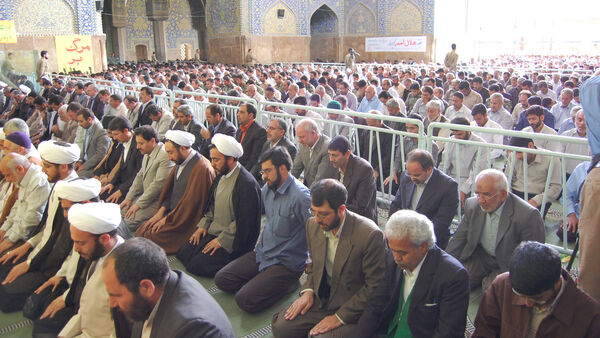Islam in a Pistachio Shell
Five times a day, God enjoys a global wave as the call to prayer sweeps from the Philippines past Iran to Morocco, and on to the US at the speed of the sun. The muezzin chants, "There is only one God, and Muhammad is His prophet."
Islam is the fastest-growing religion on Earth. There are more than a billion Muslims worldwide, making it the planet's second-largest religion (after Christianity). Thanks mainly to a small but attention-grabbing faction of Muslim extremists, the entire religion is burdened with a bad reputation in the Western world. Here's an admittedly basic and simplistic outline (written by a non-Muslim) designed to help travelers from the Christian West understand a very rich but often misunderstood culture worthy of our respect:
Muslims, like Christians and Jews, are monotheistic. They call their god Allah. The key figure in the Islamic faith is Muhammad, Allah's final and most important prophet, who lived in the sixth and seventh centuries AD. When Muhammad's name appears in print, it's followed by "PBUH:" Peace Be Upon Him.
The "five pillars" of Islam are the same among Muslims in Iran, Iraq, Turkey, Egypt, Indonesia, the US, and everywhere else. Followers of Islam should:
- Say and believe, "There is only one God, and Muhammad is his prophet."
- Pray five times a day, facing Mecca (denoted inside a mosque by a niche called a mihrab). Modern Muslims explain that along with thinking of God, part of the value of this ritual is to help people wash, exercise and stretch.
- Give to the poor (one-fortieth of your wealth, if you are not in debt).
- Fast during daylight hours through the month of Ramadan. Fasting is a great social equalizer and helps everyone feel the hunger of the poor.
- Visit Mecca. This is interpreted by some Muslims as a command to travel.
The Islamic equivalent of the Christian bell tower is a minaret, which the muezzin climbs to chant the call to prayer. In a kind of architectural Darwinism, the minarets have shrunken as calls to prayer have been electronically amplified; their height is no longer necessary or worth the expense. Many small modern mosques have one mini-minaret about as awe-inspiring as your little toe.
A mosque is a shoes-off place. Inside, the small stairway that seems to go nowhere—the mimber—is symbolic of the growth of Islam. Muhammad had to stand higher and higher to talk to his growing following. This serves as a kind of pulpit, from where the cleric gives a speech, similar to a sermon or homily in Christian church services. No priest ever stands on the top stair, which is symbolically reserved for Muhammad.
Prayer services in a mosque are segregated; women worship in back of the mosque. For the same reason I find it hard to concentrate on God at aerobics classes, Muslim men decided prayer would go better without the enjoyable but problematic distraction of bent-over women between them and Mecca.
You'll hear about the difference between Shia (or Shiite) and Sunni Muslims. After Muhammad died in AD 632, his followers argued over who should succeed him in leading his Islamic faith and state, causing Islam to splinter into these two rival factions. Most Shias (about 10–15 percent of all Muslims) are concentrated in the Middle East, while Sunnis predominate in other parts of the world (including Turkey). Shias are in the majority in both Iran and Iraq. However, Saddam Hussein was a Sunni, which created a large Sunni-led state (Saddam's Iraq) next to a large Shia-led state (the Ayatollah's Iran). A result of the US-Iraq war is that politically the Shia Muslims — led by Iran — are more powerful than ever.


